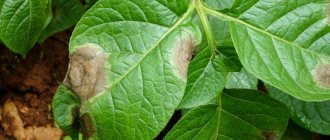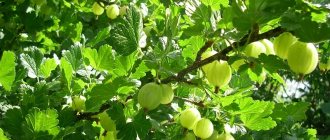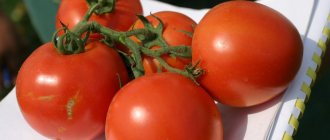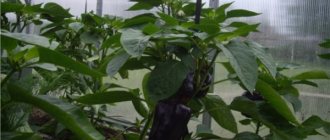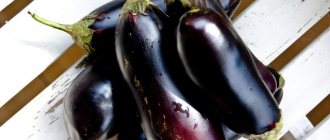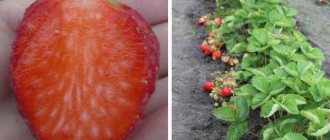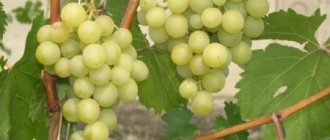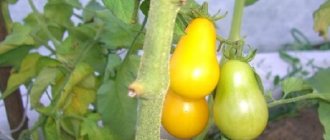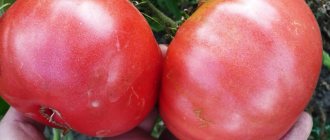Strawberry Mashenka was bred in the middle of the last century by Soviet breeders and is better known under another name - Moscow Jubilee.
For many decades, the variety occupied a place of honor in the gardens of Soviet gardeners, then it was supplanted by advertised foreign novelties and was undeservedly forgotten. Today, Mashenka’s popularity is returning and it is compared with the best expensive Dutch varieties of strawberries. A detailed comparative analysis revealed that our domestic strawberries are no worse in terms of taste characteristics, and in terms of compliance with the climatic conditions of Russia, they are significantly superior to their foreign counterparts.
Description of the variety
Mashenka is a mid-early crop characterized by extended fruiting. In the southern regions of Russia, this strawberry shows signs of remontancy and produces a second wave of harvest.
Bushes
The Moscow Jubilee bushes are compact, medium spreading, very tall (up to 45 cm in height). The corrugated leaves are large, amber-green in color and look beautiful and powerful on strong shoots.
There are a lot of flower stalks, each can produce up to 6 large fruits. The flower stalks are thick and strong, but the weight of the large berries causes them to fall to the ground. Sepals are openwork, large.
Berries
The burgundy-scarlet berries of the first and subsequent waves differ. The first berries have an almost round, slightly flattened shape, similar to a cockscomb. Such a fruit is obtained as a result of the fusion of several closely spaced flowers (flowers are fused by receptacles). One such mutant berry can weigh up to 120 g. The structure of the fruit is dense, juicy, without voids. The taste is very pleasant, sweet, with a slight sourness. The aroma and aftertaste of Mashenka transports you to a forest strawberry meadow.
The berries of the next harvest wave are already of the correct conical shape with a rounded tip. The weight is significantly reduced, but the taste remains consistently excellent.
One of the ways to “force” Moscow Yubileiny to bear fruit 2 times: after the first fruiting, mow the bushes, let them dry (do not water, only precipitation), then water them abundantly and it will bloom again.
Productivity
The yield of Mashenka strawberries is not the highest, but not the lowest either - on average 800 g per bush. With proper care, gardeners in the southern regions receive two harvests per season. Mashenka has been actively bearing fruit for 4 years. Then the plantation is renewed.
A little history
Strawberry Mashenka was bred in 1953 by Soviet breeder N.K. Smolyaninova as a result of crossing Komsomolka and hybrid seedlings Beauty of Zagorya.
Another name for the variety is Moscow Jubilee. The new variety became popular in a short period of time. It is famous for its taste characteristics and yield to this day. A large number of gardeners, as well as hobbyists, grow Mashenka strawberries in their summer cottages.
a brief description of
Modern breeders use the Mashenka varietal crop to breed hybrid varieties. They take the best that this variety has: large fruits, ease of care.
Advantages of the variety
- low requirements for growing conditions;
- large juicy fruits;
- good shelf life and transportability of the crop;
- high productivity;
- excellent taste;
- resistance to most diseases and major pests;
- winter hardiness and frost resistance;
- powerful, tall bushes;
- the possibility of obtaining two harvests per season (in the south and in the greenhouse);
- easily propagated by whiskers.
Gardeners also note the versatility of using fruits. Mashenka strawberries are good fresh, in compotes and jam.
Disadvantages of the variety
- yield decreases as temperature decreases;
- leaves and fruits get burned from hot sunlight, shading is required;
- with heavy rain and high humidity, the fruits lose their quality;
- Due to the unevenness of the fruits, the variety is not suitable for farm cultivation.
Gardeners forgive Mashenka these shortcomings because of her excellent taste and aroma.
Positive and negative qualities of garden strawberries Mashenka
This variety has a number of advantages and disadvantages. First of all, let's talk about the advantages of this variety. Among the main advantages it is worth noting:
- Large-fruited berries. This is especially true for the fruits of the first harvest.
- High yields. If you take good care of your strawberries, you can harvest up to 1.5 kg from 1 bush.
- Dessert taste qualities. Tasting rating of Mashenka’s berries – 4.4 out of 5 points.
- The variety has a fairly strong immune system, which protects the plant not only from a number of strawberry diseases, but also from attacks by parasites.
- The bushes survive frosts and short-term droughts quite well.
- The variety is quite easy to propagate using a mustache.
At the same time, we should not forget about Mashenka’s shortcomings. The main disadvantages of this variety include:
- The berries are rather poorly stored and transported due to their high juiciness.
- The berries cannot be frozen, as after defrosting they turn into mush.
Landing
It is best to plant seedlings of the Mashenka variety in the spring. Already this season the plant will give its first harvest of the largest berries. It is better not to plant a plantation in late autumn, because young strawberries will not have enough time to take root before the cold weather. The planting deadline is at least a month before the first frost.
In the south of Russia, strawberries are planted in early April. From the end of April, plantings begin in central Russia and in the Moscow region. Mid-May and early June are the best times for planting in the Urals and Siberia. By this time the air should warm up to + 10 ℃.
It is optimal to plant strawberries in late July - early August so that the seedlings develop well and bear fruit abundantly for the next season.
On the site, choose a place slightly protected from sunlight. The soil structure should be loose and fertile. Add humus (a bucket per m2), superphosphate (100 g/m2), and potassium sulfate (120 g/m2) to the beds. Clay soil is loosened with sand (0.5 buckets per m2), acidic soil is neutralized with dolomite flour or ash.
The most popular planting scheme is in rows. Leave 30 cm between bushes, 50 cm between ribbons. The beds, for better sun exposure, are located from north to south.
First, the holes must be shed with warm water and only then the seedlings should be placed in them, straightening the roots. The growing point should be located at ground level, not covered with soil. The seedlings are watered with warm water and the plantings are mulched with sawdust, peat or pine needles. It must be remembered that organic mulch at the beginning of overheating binds soil nitrogen. To prevent plants from getting sick from a lack of nitrogen, it is advisable to spill the mulch with a solution of mullein (1:10), chicken droppings (1:20).
Preparing the site for cultivation
Mashenka strawberries should be planted on the western or southwestern side of the garden, on light, well-drained soil. The site has been prepared since the fall. The following activities are being carried out.
- The ground is plowed with a shovel, weeds and fallen leaves are removed.
- Compost and humus are added.
- The plot is planted with mustard, rye, phacelia, and oats.
The next stage of preparatory work is carried out in the spring, 2-3 days before planting.
- They dig up an area with sprouted green manure.
- Add sand and humus to the soil. The ingredients, combined in a 1:2 ratio, are evenly distributed over the soil in a ratio of 15 kg of mixture per 1 square meter.
- Tilling the land with Aktara. It is diluted in 2 liters of water at a rate of 4 mg. Manipulation allows you to destroy the larvae of beetles living in the ground.
- Dig holes 30 cm deep and 35 cm wide. Water the earth and lightly compact it with your hands.
After the work, the site is completely ready for planting Mashenka strawberries.
Growing and care
Mashenka strawberries are grown in open ground and in a greenhouse. There is nothing complicated in matters of planting and care; the main thing is to water them on time and shade the bushes from hot rays.
Watering
Young bushes need frequent watering, at least once every 3-4 days. It is advisable to carry out the procedure in the morning.
Adult bushes are watered depending on weather conditions, avoiding drying out of the soil and excessive waterlogging. The best method is drip irrigation.
Experienced gardeners recommend covering strawberries with film during rainy summers to prevent the quality of the fruit from deteriorating and gray rot from developing.
Loosening and killing weeds
At the time when the Moscow Yubileinaya was just bred, Soviet gardeners did not yet have effective synthetic mulching materials. One of the labor-intensive agricultural techniques was loosening the soil around the bushes. Today it is possible to avoid this tedious procedure if you cover the strawberry bed with black spunbond. Non-woven material not only retains moisture and prevents the growth of weeds, but also protects the fruits lying on the garden bed from rot. An alternative inexpensive mulch material is regular straw or sawdust.
Removing a mustache
Strawberries of the Mashenka variety have average growth. If you do not plan to leave rosettes for reproduction, then the whiskers must be trimmed during the season at least once every 1-2 weeks.
Top dressing
Fertilizers applied during planting will last for a year. Next spring, nitroammophoska is applied under the bushes. Prepare a solution at the rate of 25 g of product per 10 liters. water. Water at the root, spending 1.5 liters. solution for each plant.
During the period of the ovary of the first fruits, the plant is fed with organic matter. Mullein is bred in a ratio of 1:10, bird droppings 1:20.
The use of herbal infusion shows good results. To prepare it, any container is filled ½ with grass and filled with water. After 10-14 days, the fertilizer is ready. The grass is squeezed out, the solution is diluted with water in a ratio of 1:3 and applied under the root. The squeezed grass will serve as a good mulch, because... has begun to rot and will not bind soil nitrogen.
At the end of fruiting, the plants are restored to strength with potassium and phosphorus fertilizers. Potassium nitrate will need 20 g per bucket, and about the same amount of superphosphate. You can replace store-bought fertilizers with wood ash at the rate of 150 g per bucket of water.
Pest and disease control
Strawberry variety Mashenka can suffer from powdery mildew and nematodes. A remedy that has been proven over the years is 1-2% Bordeaux mixture.
The most common pests that can damage bushes are spider mites and raspberry-strawberry weevils. If they are noticed on a plantation, the insecticides Aktara and Fitoverm will help.
Treatments are carried out early in the morning or in the evening. Strictly adhere to the dosage indicated in the instructions. Strawberries should not be treated with fungicides or insecticides less than a month before harvest.
Preparing for winter
Strawberries Mashenka will withstand temperatures dropping to -16 ℃. In the southern regions the plant is not covered. In the central zone, the Urals and Siberia, bushes must be prepared for wintering. Dry leaves are trimmed without touching the flower stalks, the bushes are hilled up and mulched with peat or sawdust. The top of the plants is covered with spruce branches or non-woven material.
Pests and diseases of strawberries Mashenka
As noted earlier, the variety has a fairly strong immune system. However, if the culture is started and not taken care of, it may encounter a number of the following problems:
- Gray rot. With this disease, a characteristic gray coating begins to appear on the plant. It coats the strawberry fruit, eventually rendering it inedible. The fetus dies. To combat this disease, special fungicides are used.
- White and brown spots. Characteristic symptoms of white spot are reddish spots with white dots on the leaf blades. Brown spotting is marked by the appearance of red-brown spots on leaf blades and drying out of their edges. To treat this disease, special pesticides are also used.
- Powdery mildew. With this disease, a white coating appears on the plant. Special fungicides are also used to solve the problem.
- Nematode. This parasite causes significant damage to the crop. A nematode is a small worm up to 1 mm in size. Parasites feed on the sap of the plant, which is why it begins to wither, stops developing, and loses its immune system. Strawberries affected by nematodes become susceptible to various strawberry diseases. To combat nematodes, special insecticides are used.
- Spider mite. This parasite is identified by the presence of cobwebs on the bush. After spider mite infestation, the leaf blades of the crop begin to turn yellow. To combat this insect, special insecticides are used. Good ones are “Karbofos” and “Fitoverm”.
Reproduction
Strawberries of the Mashenka variety are propagated:
- seeds;
- dividing the root system;
- rooting the mustache.
Propagation by seeds is not a popular method, it is long and labor-intensive. The division of bushes is carried out no earlier than 3-4 years after planting. Choose healthy, disease-free plants. The method is risky, not all rosettes take root, it is not uncommon for one rosette to take root from a bush and it will not be possible to increase the plantation.
The easiest and most effective method of propagation is rooting the mustache. Select the healthiest and largest uterine bushes that produce the largest amount of harvest. For reproduction, rosettes of the first and second order are taken. They are deepened into the ground, the remaining mustaches are cut off.
Seedlings can be separated from the mother bush and planted in a new place when they show the following signs:
- the diameter of the root collar is at least 6 mm;
- developed root system;
- At least 2-3 young leaves have formed.
Young plants are best suited for propagation by mustaches; in subsequent years, the number of mustaches will decrease.
Harvest and storage
Mashenka is a mid-early variety and bears fruit in early June. Ripening is smooth, so harvesting is not delayed. Not the most productive strawberry variety.
The fruits are collected 3 days after they turn red, or even unripe ones if transportation is planned. Place immediately into the container in which the crop will be stored (no more than 2 kg). The fruits must be dry.
Although Mashenka is a single-fruiting variety, some gardeners in warm regions achieve a second harvest after mowing the leaves.
Mashenka is perfect for making jam, compotes and other canned products during the winter.
Mashenka is an excellent variety for making jam.
Reviews
I have been growing the “Mashenka” variety for a long time. They do not seek good from good. The strawberries are delicious, aromatic, large, I don’t need anything more. Some berries are so large that they do not fit into a faceted glass.
I grow Clery, Asia, Syria, Moscow Jubilee. The Soviet representative is not suitable for sale - the shape of the berries is clumsy and the size is different, but the taste and aroma are good. None of the varieties spoil the collection.
Strawberries of the Mashenka variety are famous for their ease of care, excellent strawberry taste and aroma. Large berries are easy to pick and transport. This variety is worth giving it a new life. It is much better than many new imported varieties that do not take root well in the difficult climate of most Russian regions.
Advantages and disadvantages
Strawberry Mashenka has a lot of advantages, but there are also a number of disadvantages.
| pros | Minuses |
| Large, juicy berries | Berries do not store well |
| High yield | The bushes have average frost resistance |
| Unsurpassed taste | |
| Compact size of bushes | |
| Resistance to diseases, bugs | |
| Frost and drought resistance | |
| Possibility of obtaining 2 harvests per season | |
| Easy propagation by antennae |
Nuances of caring for strawberries
Mashenka was bred a long time ago, when the technology of growing on agrofibre or film was not used, so she does not require special care conditions.
Moistening the beds
Garden strawberry Mashenka loves regular drip watering, but does not tolerate severe waterlogging of the soil, like other varieties of this berry. Excess moisture is dangerous for the roots. There are several rules for watering strawberries:
- Before flowering, strawberries can be moistened with a hose and sprayer. Water getting on the foliage is not a problem.
- During flowering, water from a watering can at the root, avoiding water getting on the flowers so as not to wash off the pollen.
- During fruit ripening, irrigation is reduced and watered as the soil dries out.
Important! Make sure that water is not splashed onto the berries, otherwise they will lose their taste and aroma and become watery.
Application of fertilizing and fertilizers
In order for Mashenka’s strawberries to please you with an abundance of harvest, it is important to apply fertilizers, especially at the time of its active growth. The stronger the bush, the larger the berry will be:
- After the first leaves appear, add nitroammophoska (1 tablespoon per 10-liter bucket of water).
- In the green berries phase, add a mixture of ammonium nitrate and potassium sulfate (1 teaspoon of one and the other fertilizer per 10-liter bucket of water). Water under the bush.
- In the technical ripeness phase, a solution of potassium nitrate or wood ash is used (2 tablespoons of nitrate or 100 grams of ash per 10-liter bucket of water).
- In spring, the beds are sprinkled with organic matter: humus, compost.
Obtaining varietal planting material
Strawberry Mashenka propagates by tendrils and seeds. It is safer to buy planting material in specialized nurseries and stores. But market sellers of seedlings need to be treated with caution. Who will guarantee that the proposed seedlings are truly varietal?
If this crop already exists on the site, it is recommended to carry out clonal selection. It allows:
- improve the quality of culture;
- increase productivity.
You need to choose the most productive healthy bushes on which the number of fruits exceeds the number of runners. For each strong mustache, the first rosette is marked and slightly curled so that it takes root better, and the continuation of the mustache is cut off. After 2 weeks, the rosette will become a full-fledged planting material.
A more labor-intensive method is propagation by seeds. However, it is from seeds that healthy and high-quality plants with pronounced varietal characteristics are obtained.
In early spring, the seeds are sown in prepared containers filled with equal parts of garden soil, vermiculite and peat. Then the plantings are slightly moistened and covered with film. The containers are placed in a bright place. The air temperature should be room temperature. After 8-12 days, the first shoots will appear, but it is better to remove the film after the seedlings grow up. When the plants reach 10-12 cm and have formed 5-7 true leaves, they are planted in open ground.
The survival rate of strawberry Mashenka is high.
The variety is unpretentious, but certain agricultural practices help increase berry yield.
How to propagate the crop correctly?
Any of the chosen methods of propagating garden strawberries is correct. Mashenka is propagated in three ways. In any case, varietal characteristics are preserved.
Mustache
The most popular and sought after method. They choose the healthiest strawberry bush and leave a mustache on it. During development, the resulting daughter rosettes are cared for as the main bush.
When the offspring take root well, they are dug up and transplanted to a new bed. The first two stepsons from the queen cell are considered the best; usually there are three of them. The outermost rosette does not have time to fully form during the season.
Seeds
The most labor-intensive method of propagating strawberries, which breeders use to develop new varieties or improve existing characteristics. In early spring, the seeds are grown for seedlings under a film. After the first leaves appear, strawberry seedlings dive, and with the onset of stable warm weather they are planted in open ground.
Dividing the bush
When the beds are very thick, in order not to throw away part of the overgrown bush, it is replanted, thereby obtaining additional planting material. Here it is important to correctly cut off the “extra” part. Using a sharp knife, divide the strawberry bush so that it has roots and leaves, as well as a central bud.
